Uluburun, one of the oldest and wealthiest shipwrecks ever discovered
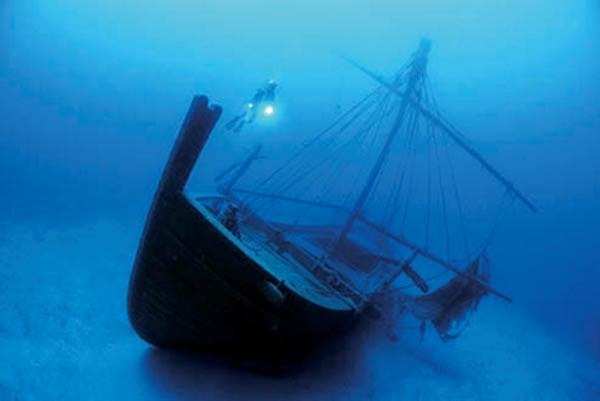
The Uluburun is a 3,300-year-old shipwreck discovered off the coast of Uluburun (Grand Cape), near Kaş in south-western Turkey. It is among the oldest ships ever discovered and contained one of the wealthiest and largest known assemblages of Late Bronze Age items found in the Mediterranean. The ship was carrying over 20 tons of cargo, believed to be a royal order. In total, more than 18,000 spectacular artifacts have been recovered, including precious jewels, luxurious raw materials, and even the golden seal of Egyptian Queen Nefertiti.
The Uluburun was first discovered in 1982 by Mehmed Çakir, a local sponge diver, on a steep rocky slope at a depth of 44 to 52 metres, with artifacts scattered down to 61 metres. Excavating it was a mammoth task, and required eleven consecutive campaigns of three to four months, conducted by the Institute of Nautical Archaeology, totalling 22,413 dives between 1984 and 1992.
The ship itself was 15 metres long and is the earliest known example of a ship constructed using the advanced mortise and tenon technique, where planks were joined by flat tongues of wood inserted into slots cut into the planks. The wood is Lebanese cedar, indigenous to the mountains of Lebanon, southern Turkey, and central Cyprus. The featured image is an accurate replica wreck of the Uluburun, showing how the ship would have once appeared.
The wreck site as viewed from the deeper end showing displaced anchors originally stowed near the bow. Credit: INA
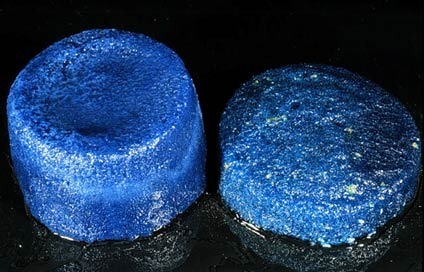
At the time of sinking, the ship was carrying over 20 tons of cargo, including both raw materials and finished goods, which have been traced back to at least seven different cultures, including Mycenaean, Syro-Palestinian (forerunners of the Phoenicians), Cypriot, Egyptian, Kassite, Assyrian and Nubian.
The main cargo was approximately 10 tons of primarily Cypriot copper in the form of 354 ingots. The Uluburun also contained the earliest known intact ingots of glass; 175 of disc-shape were recovered, which were coloured with cobalt blue, turquoise, and a unique lavender.
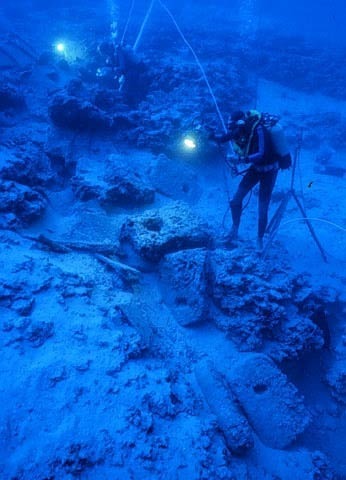
The earliest intact glass ingots of disc shape. Chemical analyses have revealed the use of cobalt (left) and copper (right) as colouring agents. Credit: INA
Other raw materials included a ton of terebinth resin contained in around 150 Canaanite jars (most likely for incense), logs of Egyptian ebony, ostrich eggshells, elephant tusks, hippopotamus teeth, seashells, and tortoise shells.
The finished goods were just as luxurious – Egyptian objects of gold, electrum, silver, and stone; Canaanite jewellery; thousands of beads made of glass, agate, carnelian, quartz, faience, and amber; and finely crafted figurines, including a bronze female statuette, partly clad in gold, of Syro-Palestinian origin. One of the most unique and precious items was a scarab bearing the cartouche of Queen Nefertiti.
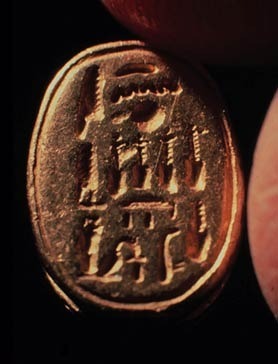
Egyptian scarab naming Queen Nefertiti. Credit: INA
Other artifacts included ivory cosmetics containers, a trumpet carved from a hippopotamus incisor, bronze tools and weapons, lead net and line sinkers, netting needles for repairing nets, fishhooks, a harpoon, a bronze trident, and wooden writing boards. However, the largest group of manufactured goods on the ship was Cypriot fine- and coarse-ware ceramics.
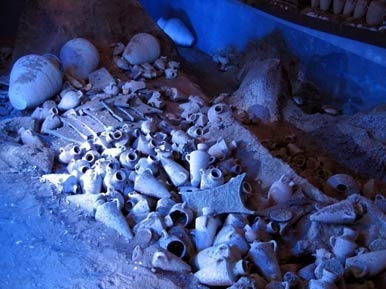
Some of the Cypriot ceramics found on the Uluburun. Image source .
An analysis of the artifacts that were personal possessions of the crew members, such as tools, oil lamps, and writing boards, suggests that the crew were Canaanite and/or Cypriot, although at least two were Mycenaean.
The proveniences of the artifacts suggest that the Late Bronze Age Aegean was part of an international trade network perhaps based on royal gift-giving in the Near East, in which ships sailed the Mediterranean on a circular route from Syro-Palestine to Cyprus, onto the Aegean, and occasionally as far west as Sardinia, then back home via North Africa and Egypt.
Trade routes in the Eastern Mediterranean during the Bronze Age
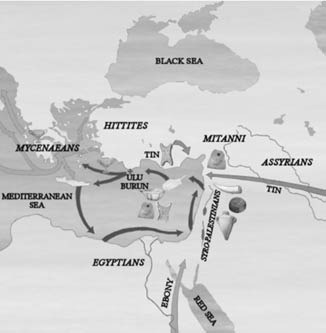
The Uluburun is considered one of the most important and fascinating sea wrecks ever discovered, and has provided archaeologists with an abundance of information about ancient society and culture across the Mediterranean, including Bronze Age ship building, sea routes, trading practices, and the production and exchange of raw materials and luxurious goods. Today, the remains of the Uluburun and its cargo are housed in the Bodrum Museum of Underwater Archaeology

Leave a Reply